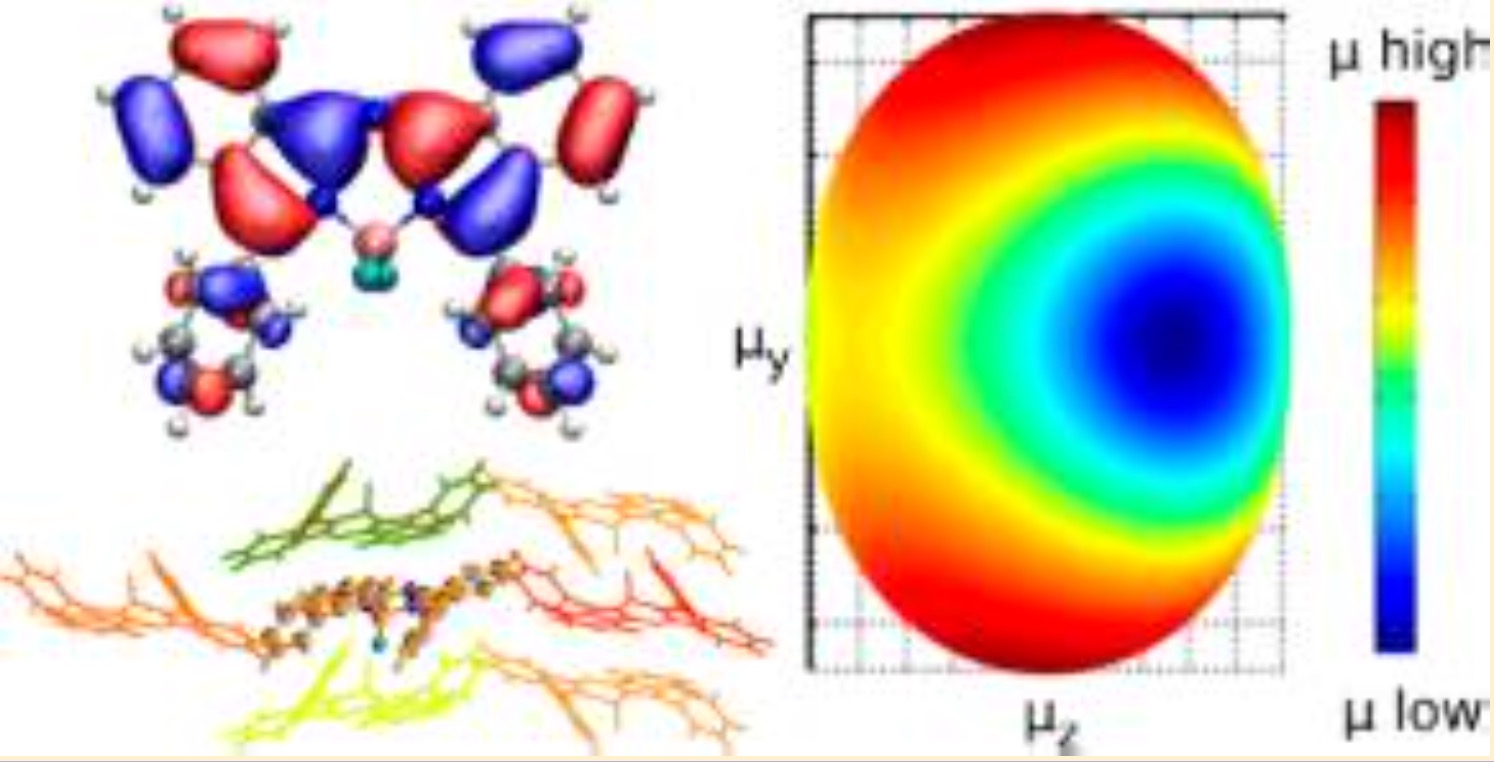In a theoretical study, combining molecular dynamics simulations, quantum-chemical calculations, and charge migration simulations based on Marcus theory, we investigate the electronic structure, its fluctuations, and the charge transport of a promising organic near-infrared absorber material: 7,7-difluoro-7H-5,9-diphenyldiisoindolo[2,1-c:1,2-f][1,3,5,2]triazaborinine-6-ium-7-uide (Ph2-benz-BODI-PY), which is already successfully used as the donor material in organic solar cells. For the crystalline, defect-free phase, we find a one-dimensional hole transport characteristic with a mobility of 0.53 cm2/(V s) and a two-dimensional electron transport characteristic with a smaller mobility of 0.15 cm2/(V s). The attachment of the phenyl rings to the molecular core tends to improve the electron conduction by reducing the internal reorganization energy and by increasing the intermolecular coupling. In contrast, such functionalization tends to impair the hole transport as the highest occupied molecular orbital couples dominantly to the dynamics of the phenyl rings and the annulated benzene rings.

In a theoretical study, combining molecular dynamics simulations, quantum-chemical calculations, and charge migration simulations based on Marcus theory, we investigate the electronic structure, its fluctuations, and the charge transport of a promising organic near-infrared absorber material: 7,7-difluoro-7H-5,9-diphenyldiisoindolo[2,1-c:1,2-f][1,3,5,2]triazaborinine-6-ium-7-uide (Ph2-benz-BODI-PY), which is already successfully used as the donor material in organic solar cells. For the crystalline, defect-free phase, we find a one-dimensional hole transport characteristic with a mobility of 0.53 cm2/(V s) and a two-dimensional electron transport characteristic with a smaller mobility of 0.15 cm2/(V s). The attachment of the phenyl rings to the molecular core tends to improve the electron conduction by reducing the internal reorganization energy and by increasing the intermolecular coupling. In contrast, such functionalization tends to impair the hole transport as the highest occupied molecular orbital couples dominantly to the dynamics of the phenyl rings and the annulated benzene rings.
